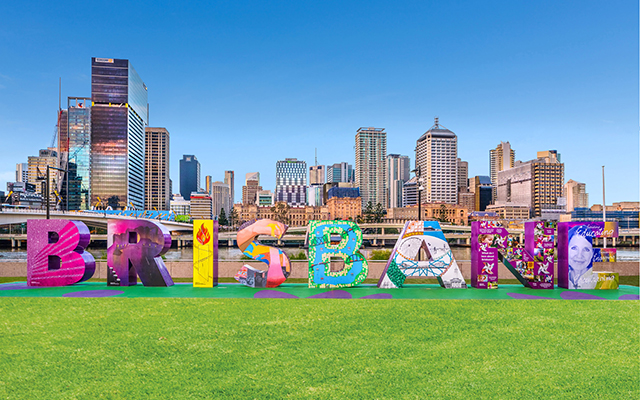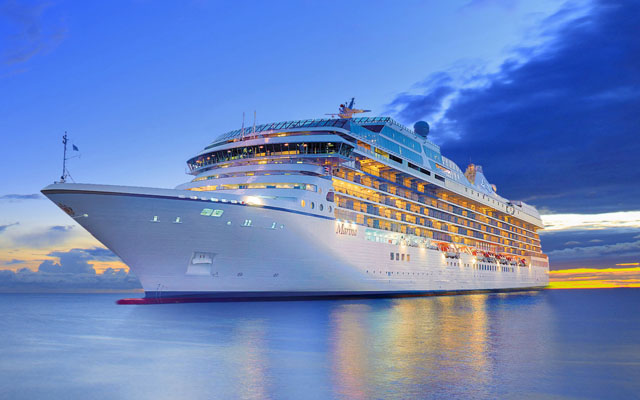Australia is leaning on adventure tourism to catalyse her tourism recovery, and the strategy for that involves expanding the pool of offerings to charm thrill-seekers of all ages and activity levels. By Adelaine Ng
Whether it is handling a giant crayfish on a perfect beach or getting lost in a forest of super tall trees, Australia has long evoked a sense of natural wonder and inspired many an adventurous traveller.

And now, it is that adventurous traveller that Australia needs, to help lead the tourism recovery charge.
“We’ve missed you”, declares the first line in Tourism Australia’s marketing collateral as efforts ramp up to encourage visitors to come back, after borders reopened in February this year.
What Australia has also missed is an adventure tourism market valued at US$22,370 million in 2019 before the pandemic hit. It was further estimated to grow at a compound annual growth rate of 21 per cent from 2021 to 2027, to reach US$33,519 million by the end of that period, according to Allied Market Research.
The numbers are unsurprising when you consider that the adventure sector is expanding rapidly around the world. Market Data Forecast predicts the industry will reach US$1.6 billion by 2026. But what’s impressive about Australia’s growth is that the rate significantly exceeds the research firm’s predicted global growth rate of 13.3 per cent.
So, what is driving the demand that many believe will play a key role in Australia’s tourism recovery?

Homecoming
“The youth and adventure sector is getting a lot of attention right now,” confirmed Alex Hill, president of Adventure Tourism Victoria.
“Many government and tourism organisations are putting a lot of effort into attracting these travellers back to Australia. They’re just pumping money and investment into adventure tourism,” he said.
One of the campaigns Hill is talking about comes from South Australia, which recently made headlines in the UK for offering return flights from London to Adelaine at just 10 pounds (US$11.97). The scheme targeted the younger people who would take up working holiday visas to fill job gaps in a bid to support the hospitality industry’s recovery.
But there’s a lot more going on than just filling a few job gaps.
“Pre-Covid, we would have as many as 275,000 working holiday visa holders in Australia at any given time. In March 2020, they were asked to leave Australia when the pandemic hit. We’ve lost 20 to 30 per cent of our workforce in some industries, and for the last six months we’re seeing the implications of those decisions as the economy opened up,” said Hill.
Hill explained that these working holiday visa workers are also typically Australia’s biggest adventure tourists.
“As soon as the borders were open, these were the guys that got on the planes to head south (for) Australia to have their holiday or working holiday that they have missed out on for the last two years. They’re happy to bungee jump, do the hikes and jump out of an airplane,” he added.
Going back to Tourism Australia’s marketing collateral, however, its call for visitors to return not only reclaims missed opportunities, but also points out that everything from food to fashion has had a fresh makeover, with new tourism experiences and accommodation opening in hidden corners of the country as reasons to visit.
These include a new underwater stay in the Great Barrier Reef, a walk-the-plank challenge 140m above sea level in tropical north Queensland or a zipline from the top of Matagarup Bridge in Perth.
New adventures do not always have to involve physical risk. Tourism Australia’s marketing also targets what it calls adventure experiences for the soul, such as astro tourism or an iconic rail journey, or even a tiny-home stay.
“If you think about Tourism Australia’s marketing overseas, there was always a picture of Kakadu National Park or similar,” said Hill. “But I think we’ve gone a bit deeper than that.”
He explained: “With the many government grants that have been available, places like Victoria have been developing tourism products that link back to our first nations people and understanding that these are our true strengths, and it’s what we want to grow.”

Age is no limit
Tourism observers have noticed a newer market developing at the other end of the age demographic for the sector, and technology has played a role in meeting that market.
“Travellers in the older age bracket of over 50 and 60 are now starting to engage in adventure activities, and I think it’s partly to do with the popularity of e-bikes,” said Stephen Wearing, adjunct professor of eco-tourism studies at the University of Technology Sydney.
“There’s something like 35 rail trails being developed, which are a gentler ride on old railway lines that older people can access without worrying as much about their bodies breaking down.
“They’re looking for activities on this side of Covid and communities are developing their tourism to attract this market.
“So we’re seeing the convalescing of technology, development and communities wanting tourists, and the availability of rail trails and infrastructure funding to develop those,” he shared.
Wearing also noted larger businesses have been buying out smaller adventure tourism companies that have struggled through the pandemic. The net result is seeing their more isolated offerings now marketed to a much broader audience, including to those in the older age groups.
One example is the multi-award winning Maria Island Walk in Tasmania, which features a four-day glamping walk popular with older tourists. It was sold to leading Australasian adventure company Experience Co in 2021 and is perpetually fully booked, benefitting from Experience Co’s wider market reach.
As for what lies in store for adventure tourism in Australia, it is a case of ‘watch this space’.
Wearing believes the e-bike will revolutionise the way Australia does tourism internationally. The rise of man-made wave pools and increasing number of high ropes courses built during the pandemic also echo a healthy future for adventure tourism.
“Right now, it’s (already) great but in a couple of years’ time, it’s going to be fantastic,” said Hill.
“There’s been a lot of ideas over the last two years and a number of really exciting projects will hit the ground very soon. A world-class mountain bike facility in Warburton, 90 minutes east of Melbourne, is going to mesh seamlessly within a natural, cool temperate forest, alongside other offerings that complement that facility.”
“Projects like that are happening around the country because there’s a real need and desire for all levels of government, developers and tourism operators to come together to create these nature-based tourism experiences,” he concluded.















